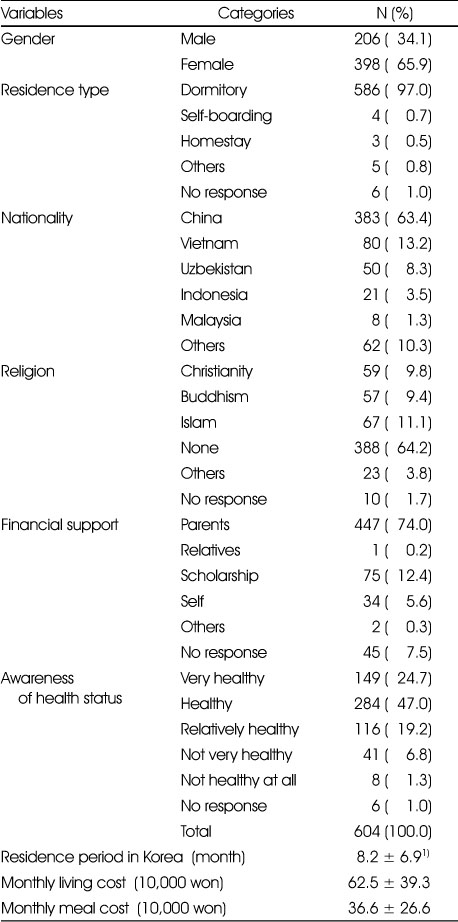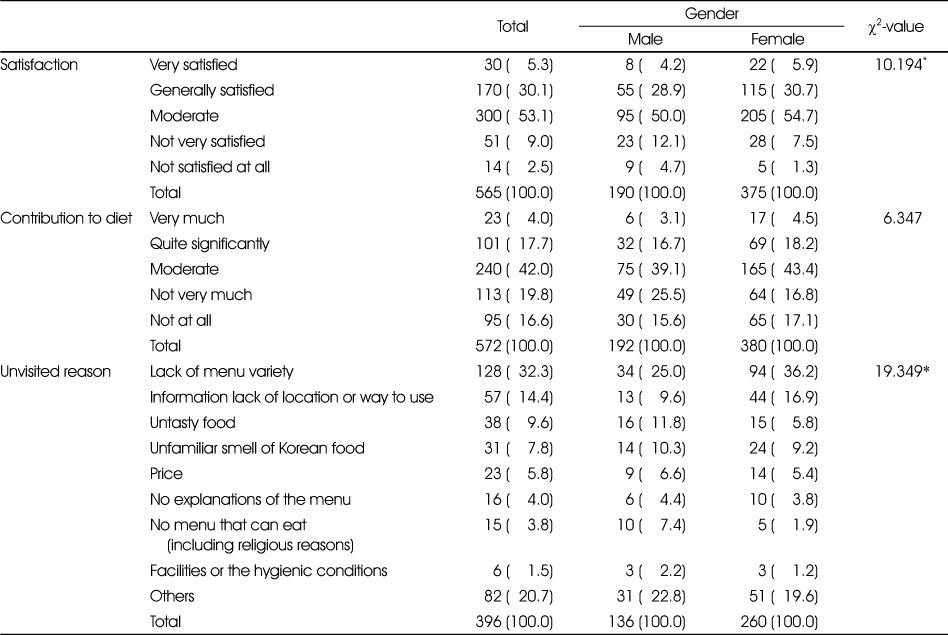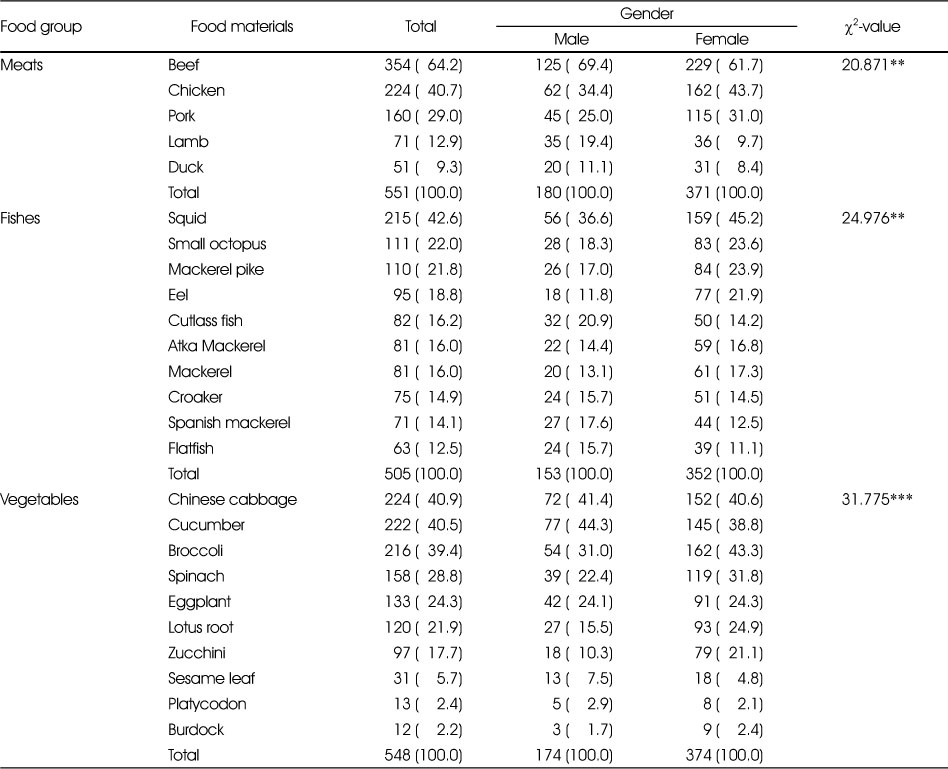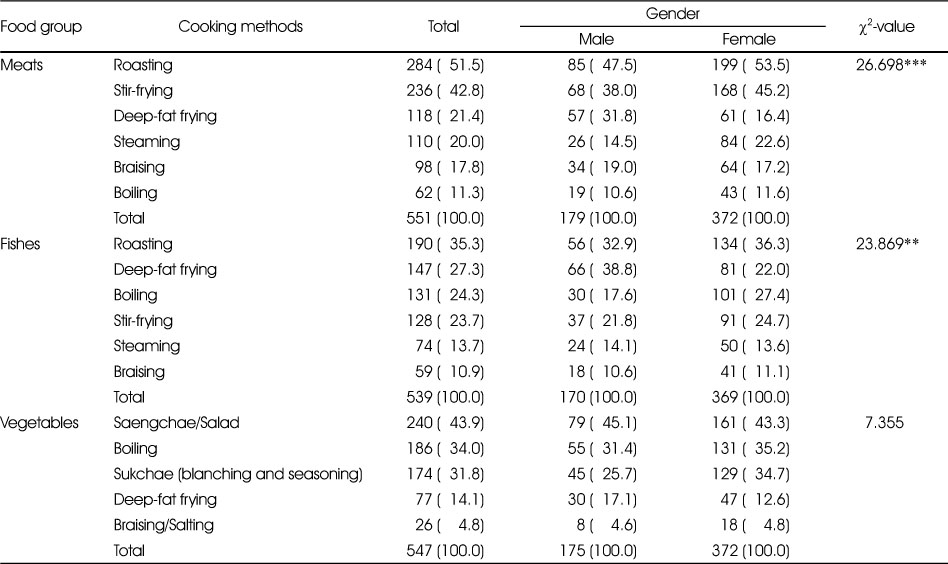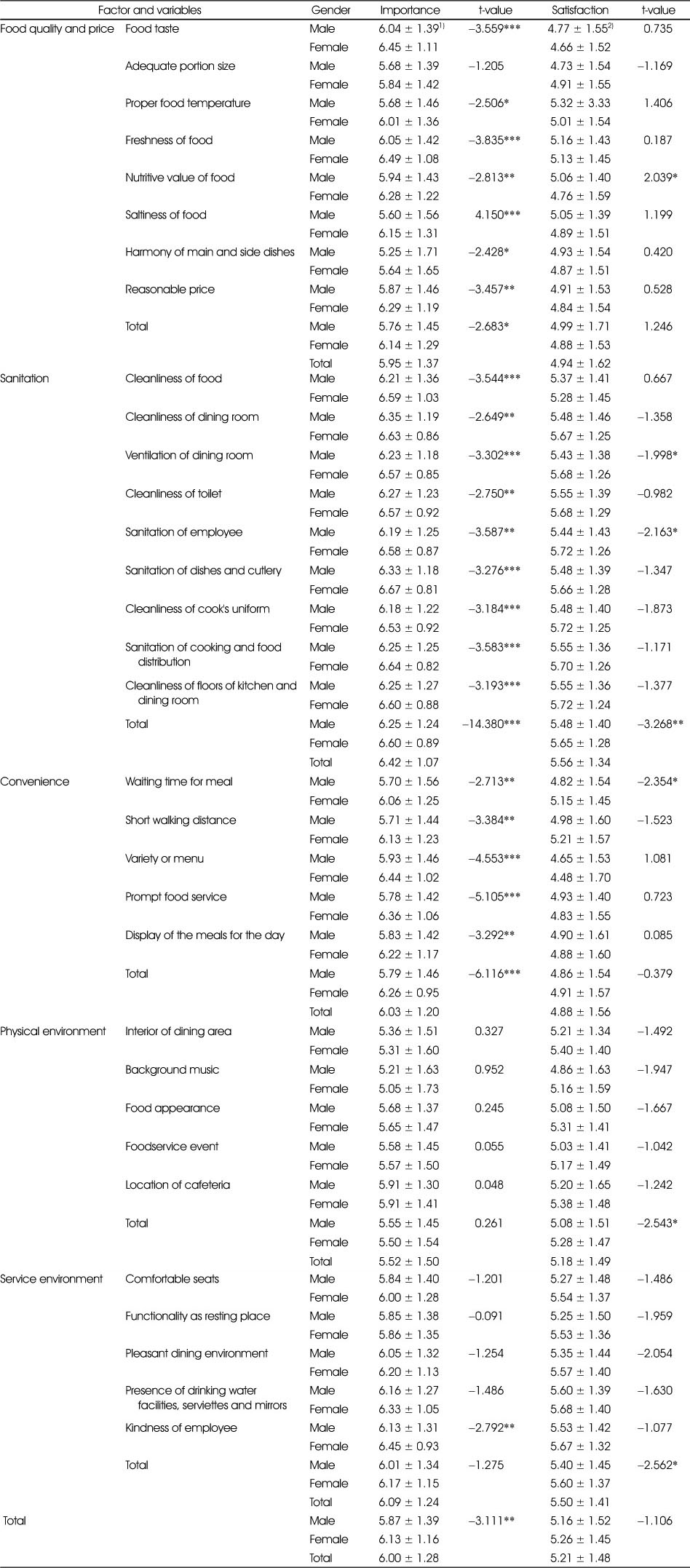References
1. Korean Ministry of Education. Current status of international students at higher education institutions in 2017 [Internet] 2017. cited 2017 Sep 29. Available from:
http://www.moe.go.kr.
2. Gaowei , Kim SY, Chang NS, Kim KN. Dietary behavior and nutritional status among Chinese female college students residing in Korea. Korean J Nutr 2013;46(2):177–185.
3. Lee HJ, Lee YE, Park EH. Foodservice operational system and satisfaction of customers with foodservice at youth facilities. J Korean Soc Food Sci Nutr 2015;44(9):1374–1387.
4. McCool AC, Smith FA, Tucker DL. Dimensions non-commercial foodservice management 1st edth ed. NY, USA: Van Nostrand Reinhold; 1994. p. 39–44.
5. Gramling L, Byrd R, Epps L, Keith D, Lick R, Tian R. Foodservice management and its impact college operations: a business anthropological case study. Foodserv Res Int 2005;16(1):15–43.
6. Hong KH, Lee HS. Study of the dietary behaviors and adaptation for Korean foods among international students in Busan. J Korean Soc Food Cult 2018;33(2):112–124.
7. Jung HY, Jeon ER. Preference for Korean food and satisfaction of dormitory foodservice by Chinese students studying at Mokpo national university. J Korean Soc Food Sci Nutr 2011;40(2):283–289.
8. Yi NY. Mediating effects of perceived value on the relationship between university foodservice quality attributes and satisfaction of Chinese students in Daejeon. J Korean Soc Food Sci Nutr 2015;44(11):1750–1758.
9. Shin JH. International students recruitment and management in Gyeonggi: focus on Chinese students Gyeonggi Research Institute; 2012. 03. Report No. 2012-04.
10. Choi JH, Zhang Y, Zheng H, Zhu X. Affecting factors on the living satisfaction degree in university dormitory's service: focusing on the foreign students of “G” university. J Serv Res Stud 2012;2(2):99–113.
11. Ryu SH, Cho YH, Han YR. Adaptation for Korean foods and satisfaction for foodservice by different residence periods of Chinese and Japanese university students in Daejeon. J East Asian Soc Diet Life 2014;24(1):143–155.
12. Lim C. Acculturative stresses and adjustment elements of Chinese students' studying in Korea. J Korean Living Sci Assoc 2009;18(1):93–112.
13. Yu L. Study on adaptability and preference of Korean food for Chinese students [master's thesis] Woosuk University; 2013.
14. Gao RR, Kim JH. Changes in dietary life and health-related lifestyle by stress level in Chinese international students in Korea. J Korean Diet Assoc 2018;24(1):75–91.
15. Lee SJ, Jung HY. Identification of quality attributes of university foodservice and factors required for the improvement of customer satisfaction: a case study using IPA model. J Korean Diet Assoc 2010;16(3):208–225.
16. Jing Z. Influence of the service quality of university cafeterias on the satisfaction of Chinese students in South Korea [master's thesis] Daegu University; 2012.
17. Fan MM, Bae HJ. Analyzing the importance and satisfaction on the university foodservice selection attributes of foreign Chinese students in Gyeongbuk province. Korean J Food Nutr 2014;27(1):128–135.
18. Yun NY, Choi HS, Lyu ES. Satisfaction of foodservice in high school boarding students in Busan. J Korean Soc Food Sci Nutr 2015;44(11):1733–1740.
19. Choi MK, Choi SH, Lee S. An assessment of customer satisfaction towards university residence hall foodservice and subjective QOL (Quality of Life): focused on the university students in Daegu, Gyeongbuk area. Korean J Community Nutr 2009;14(1):114–122.
20. Jung HY. A study on utilization and perceived service quality of the university foodservice. J Korean Soc Food Sci Nutr 2013;42(4):633–643.
21. Lee SK. Nutrition management, Cornell dining program Nutrition and Dietetics; 2015. 03. p. 48–51.
22. Ren L, Jang JS. A study of dietary life related factor according to the acculturation degree on Chinese students in Korea. Korean J Food Nutr 2017;30(4):627–634.
23. Lee M, Urkunchiev A, Park S, Aigozhayeva A. Analysis on the cultural adaptation stress of central Asian students in South Korea. J Educ Cult 2015;21(5):283–307.
24. Park SJ, Kim JA, Lee SY. A study on attitude satisfaction of service quality in university foodservices. J East Asian Soc Diet Life 2004;14(1):83–91.
25. Yi NY. Importance-performance analysis (IPA) of service quality attributes of university foodservice: A comparison of male and female students' perceptions in Daejeon. Korean J Hum Ecol 2012;21(2):389–405.


